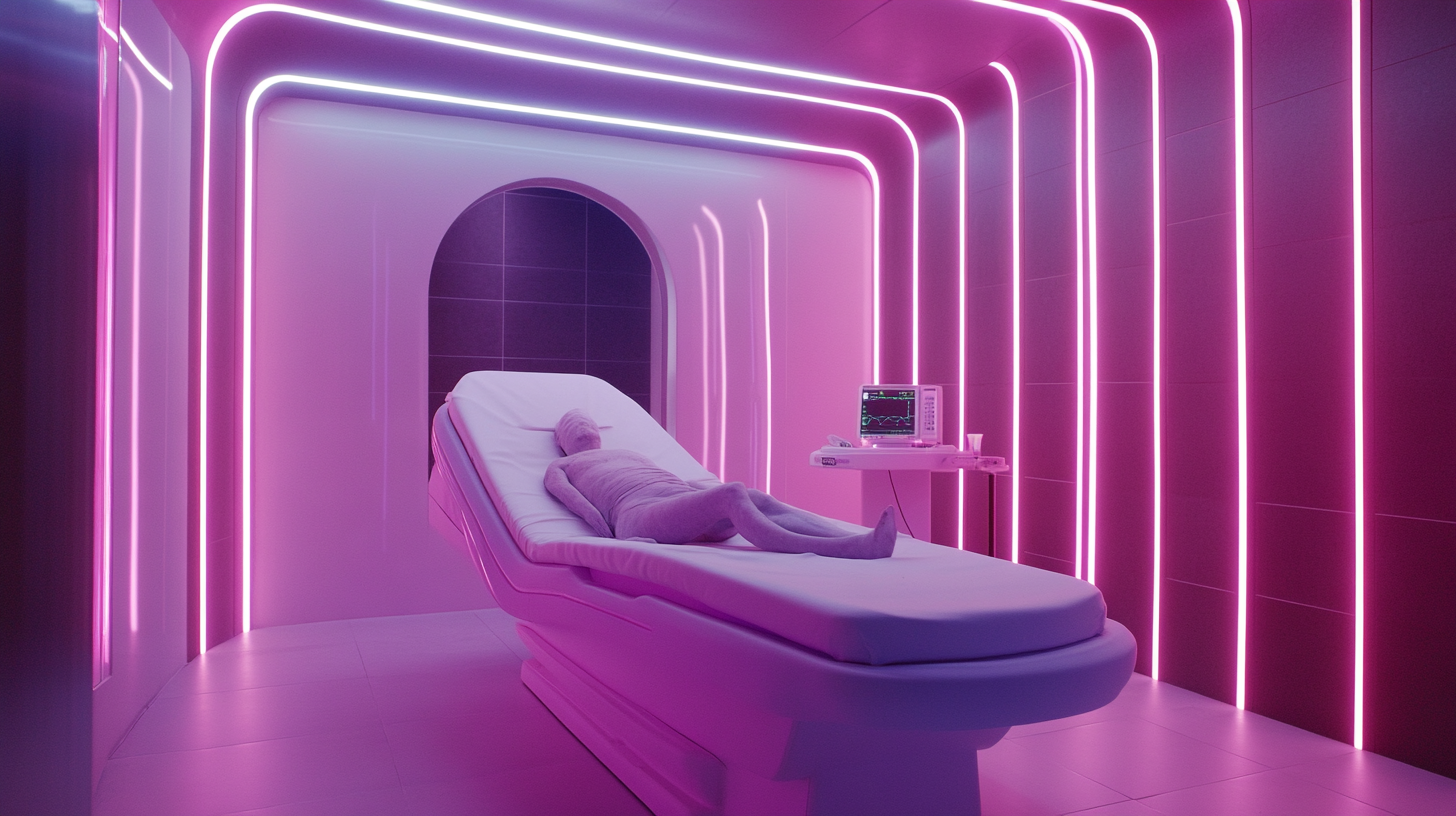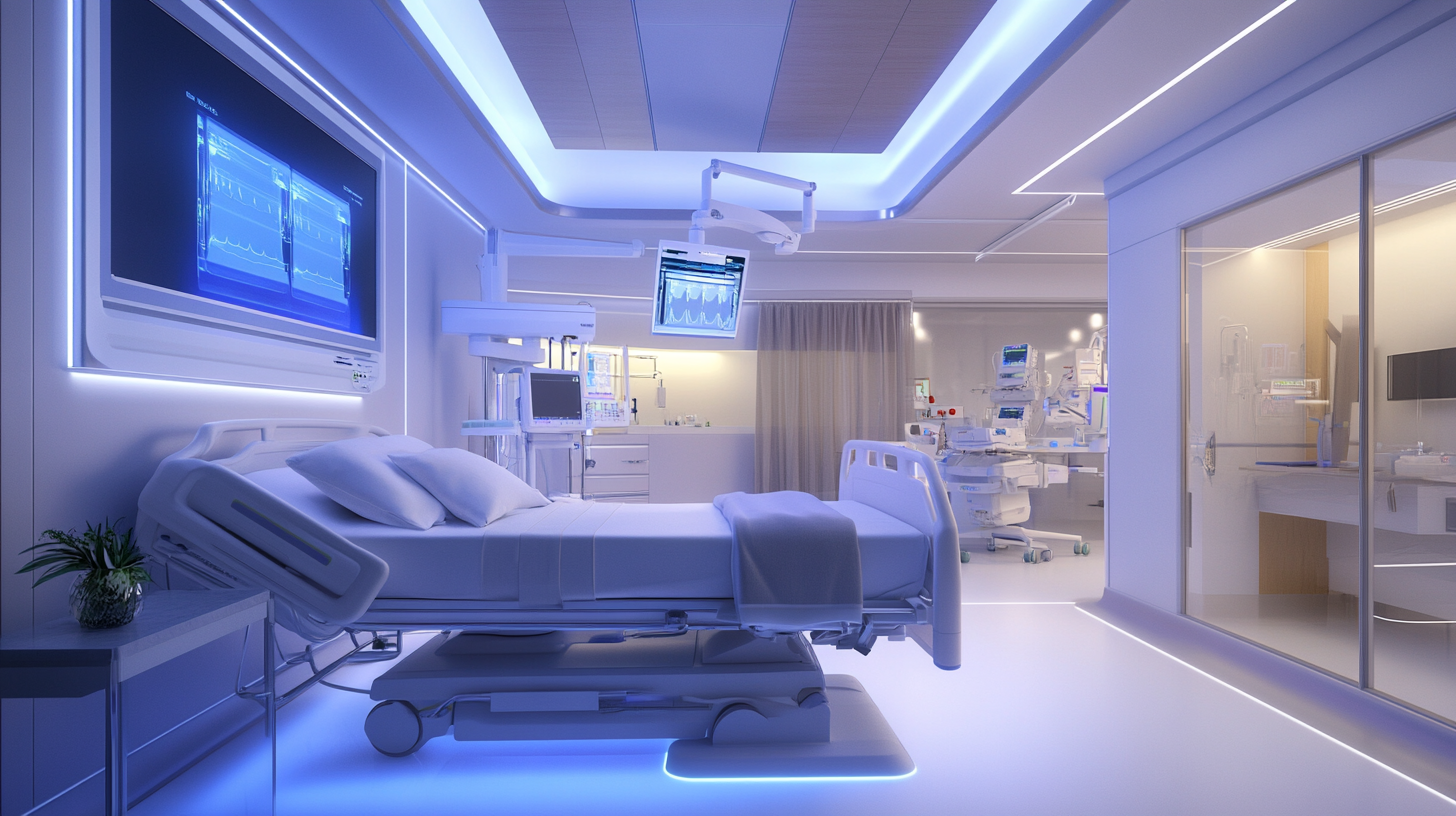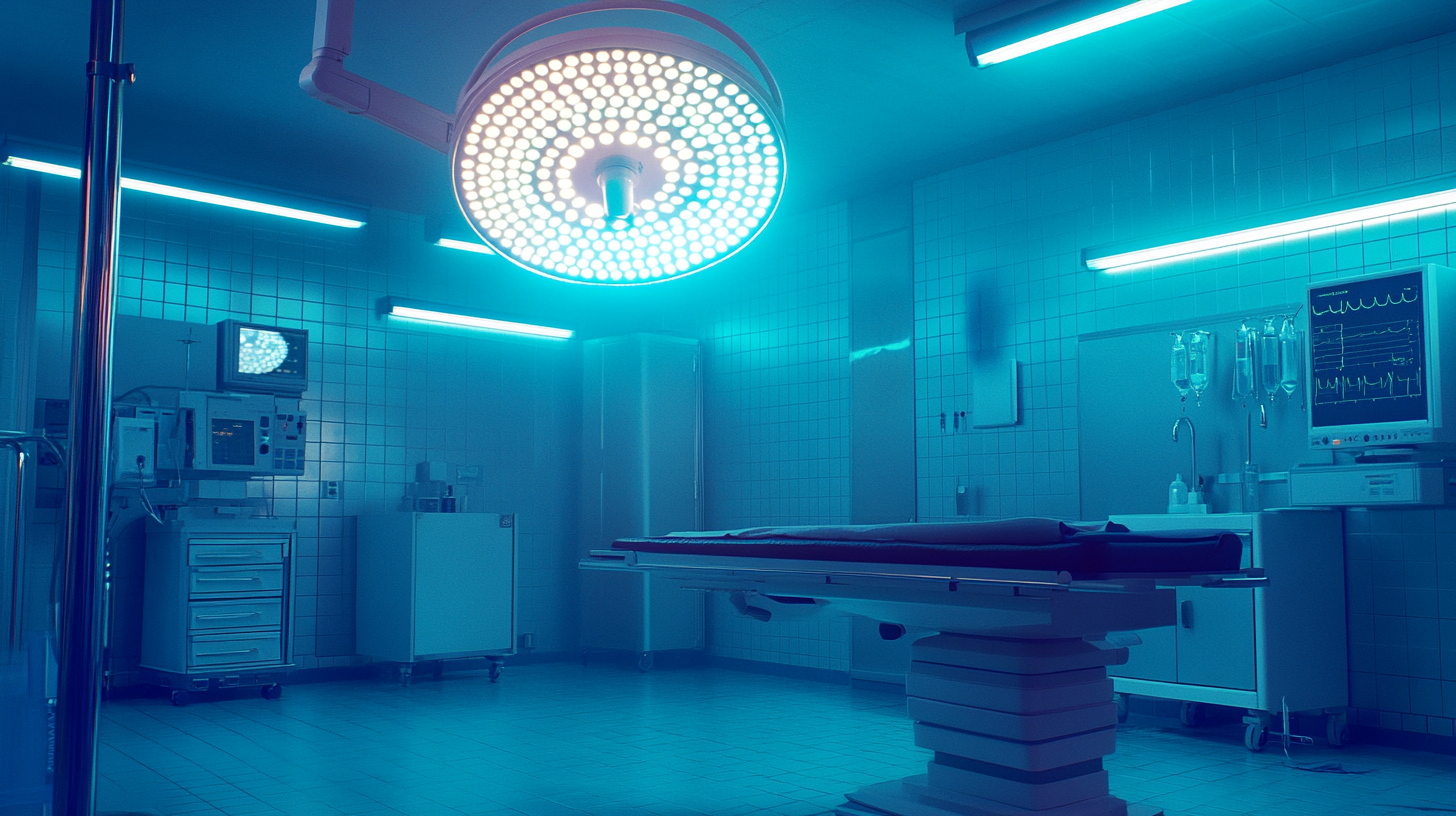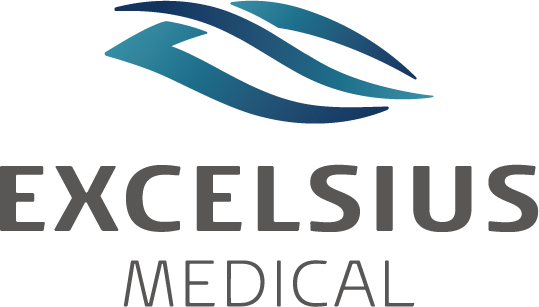Unlocking the Future of Healthcare with Medical Light Innovations and Technology
The healthcare industry is experiencing a transformative shift powered by advancements in technology, particularly in the realm of Medical Light innovations. According to a report by Markets and Markets, the global medical lighting market is expected to reach $8.9 billion by 2025, growing at a CAGR of 5.1% from 2020. This growth is driven by the increasing demand for advanced diagnostic and therapeutic techniques that rely on high-quality lighting solutions. With the integration of LED technology, surgical and examination lighting has evolved, offering enhanced visualization and improved patient outcomes.
Emerging trends indicate that Medical Light technology is not only enhancing surgical environments but is also playing a pivotal role in patient care settings, improving conditions for both healthcare professionals and patients. A study published in the Journal of Healthcare Engineering highlights that optimal lighting can significantly reduce visual strain and enhance focus during procedures. As we unlock the future of healthcare through these innovations, the potential to improve clinical workflows, elevate surgical precision, and enhance overall patient satisfaction becomes increasingly evident. This blog will explore the exciting developments in Medical Light technology and its impact on the future of healthcare delivery.

Revolutionizing Diagnostics: The Role of Medical Light Technologies
The integration of medical light technologies is poised to revolutionize diagnostics, a crucial element in the journey toward enhanced healthcare outcomes. Recent advancements highlight how innovative methods, like non-invasive imaging techniques, can provide high-resolution views of biological processes, leading to earlier disease detection. This capability is particularly vital in understanding complex diseases and could reshape how conditions are diagnosed—from identifying tumors to chronic viral infections. Artificial intelligence (AI) further amplifies these advancements, paving the way for smarter diagnostic tools that analyze light-based data to produce accurate results quickly. For instance, the use of AI in light-based diagnostics enables the discovery of previously overlooked viruses, unveiling the hidden virosphere and broadening our understanding of infectious diseases. Together, these technologies create a synergy that not only improves current diagnostic practices but also opens the door for a future where diagnostics are more personalized and efficient. As the medical community embraces these cutting-edge technologies, the implications for patient care are immense. Athletes, for example, benefit from these innovations in both diagnosis and treatment, allowing for tailored recovery plans that incorporate real-time data from AI-enhanced monitoring systems. With the ongoing evolution of medical light technologies, the healthcare landscape is set to undergo a transformative shift, fostering a healthier future for all.

Transformative Treatments: How Light Therapy is Changing Patient Care
Light therapy has emerged as a groundbreaking mode of treatment, reshaping the landscape of patient care. According to a report by the Global Light Therapy Market, the sector is projected to grow at a compound annual growth rate (CAGR) of 8.3% from 2021 to 2028. This growth underscores the increasing recognition of light therapy's effectiveness in treating various conditions, from mood disorders like Seasonal Affective Disorder (SAD) to physical ailments such as psoriasis and acne.
Recent advancements in medical light technology are paving the way for more targeted and efficient treatments. For instance, photobiomodulation therapy (PBMT) utilizes specific wavelengths of light to promote healing and reduce inflammation. Research published in the Journal of Clinical Laser Medicine & Surgery indicates that patients receiving PBMT reported a significant decrease in pain levels, with 75% experiencing more than a 50% reduction within just a few sessions.
Moreover, light therapy is proving invaluable in enhancing mental health care. A study conducted by the American Psychiatric Association highlighted that light exposure has been found to help regulate circadian rhythms and boost serotonin levels, contributing to improved mood and reduced anxiety. As healthcare providers increasingly adopt these innovative treatments, the potential to change the patient experience remains profound, offering non-invasive alternatives that promise effective relief and enhanced quality of life.

Enhanced Imaging Techniques: Peering Deeper into the Human Body
The realm of medical imaging has seen transformative advancements, unlocking unprecedented potential for diagnosing and treating various conditions. Enhanced imaging techniques are revolutionizing how we visualize and understand the human body. Technologies such as high-resolution MRI, advanced CT scans, and the latest in ultrasound imaging allow healthcare professionals to peer deeper into anatomical structures, revealing intricate details that were once obscured.
These innovations not only improve the clarity of images but also reduce the time required for procedures. With innovations like portable ultrasound machines and real-time imaging capabilities, doctors can make quicker, more informed decisions, significantly impacting patient outcomes. Additionally, technologies such as dual-energy CT and functional MRI are enabling specialists to capture both the structure and the functionality of tissues. This multidimensional approach empowers healthcare professionals to diagnose complex conditions earlier and more accurately.
Moreover, the integration of artificial intelligence in imaging is further enhancing diagnostic accuracy. AI algorithms can analyze vast amounts of imaging data, identifying patterns and anomalies that human eyes might miss. This synergy between technology and human expertise not only boosts efficiency but also fosters a more personalized approach to patient care, paving the way for tailored treatments based on precise imaging insights. As we continue to unlock these new possibilities, the future of healthcare is undeniably brighter, with enhanced imaging techniques leading the charge.

Innovations in Surgical Procedures: Light as a Precision Tool
In recent years, the integration of advanced lighting technologies in surgical procedures has revolutionized the precision with which surgeries are performed. Surgical lighting innovations, such as LED and fiber optic technologies, have improved visibility during intricate procedures, allowing surgeons to operate with greater accuracy. According to a report by Research and Markets, the global surgical lighting market is projected to reach $1.74 billion by 2026, indicating a robust growth driven primarily by the demand for enhanced surgical precision and patient safety.
One of the most significant advancements in this area is the adoption of light-based imaging and visualization tools. These technologies, which include high-definition imaging and augmented reality overlays, not only illuminate the surgical site but also provide a wealth of information in real-time. A study in the Journal of Biomedical Optics highlighted that the utilization of enhanced optical techniques can reduce the rate of surgical errors by up to 30%, showcasing how precision tools centered around light can impact patient outcomes positively.
Moreover, the role of light in minimally invasive surgeries cannot be overstated. Utilizing light-based technologies, surgeons can perform procedures through smaller incisions, resulting in faster recovery times and reduced post-operative complications. According to the American College of Surgeons, minimally invasive techniques lead to shorter hospital stays and fewer complications, saving healthcare systems significant costs. The intersection of medical light innovations and surgical practice emphasizes a pivotal shift toward more efficient, safer, and patient-centered healthcare solutions.
The Future of Telemedicine: Integrating Light Technology for Remote Care
As telemedicine continues to evolve, the integration of light technology in remote care stands at the forefront, heralding a new era in healthcare delivery. A recent collaboration has resulted in the development of an advanced hybrid remote medical monitoring system that has garnered significant recognition, underlining the potential of integrating mixed reality technologies into remote patient care. This transformation is not merely theoretical; it is backed by data indicating that remote monitoring solutions are experiencing exponential growth, driven by an increased demand for at-home healthcare solutions amidst a rapidly aging population.
Moreover, the convergence of Internet of Things (IoT) technology with healthcare systems is revolutionizing patient management. IoT-enabled devices are streamlining monitoring processes, allowing for real-time data collection and analysis, ultimately enhancing the quality of care. For instance, a report indicates that the global telemedicine market is expected to reach $459.8 billion by 2026, propelled by advancements in both technology and changing patient expectations. The ability to deliver care remotely, coupled with precision clinical monitoring from smart wearable devices, is set to diminish the barriers between patients and providers, facilitating more personalized and efficient healthcare experiences.
In addition to IoT, the emergence of large-scale AI models in healthcare is reshaping clinical decision-making. These models are already being leveraged for various applications across medical fields, suggesting that AI could significantly enhance the accuracy and speed of diagnosis and treatment. It is projected that the integration of AI within telemedicine will not only improve patient outcomes but also optimize resource allocation within healthcare systems. As these technologies mature, the future of telemedicine seems poised to create a more connected, efficient, and patient-centric healthcare ecosystem.
© 2025 EXCELSIUS MEDICAL All rights reserved
EXCELSIUS MEDICAL
Taiwan Office
2F., No. 18, Ln.31, Sec.1, Huandong Rd.,
Xinshi Dist., Tainan City 744, Taiwan, R.O.C.
German Office
Zeppelinstr. 4, Haus 3&4,
D-85399 Hallbergmoos, Germany

